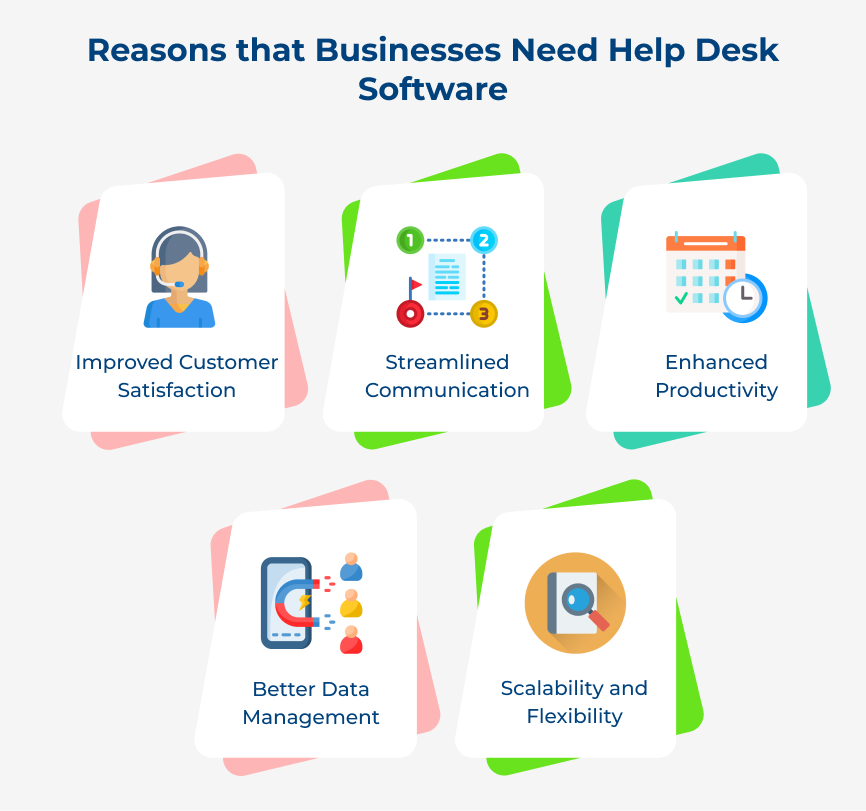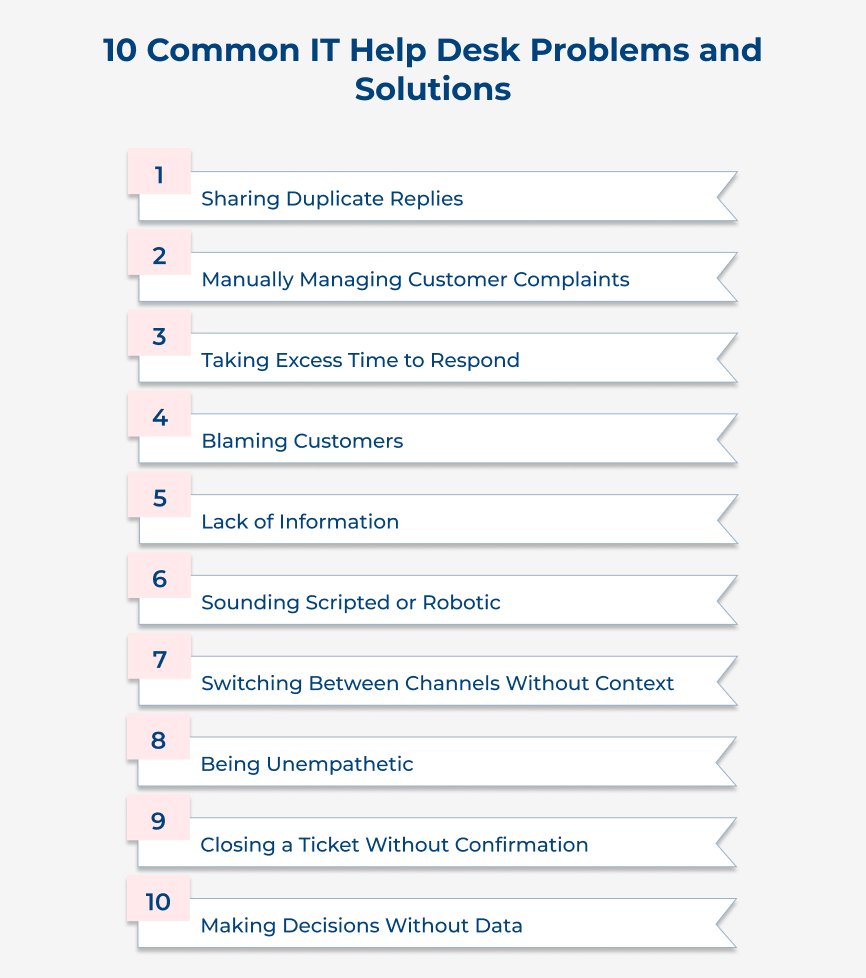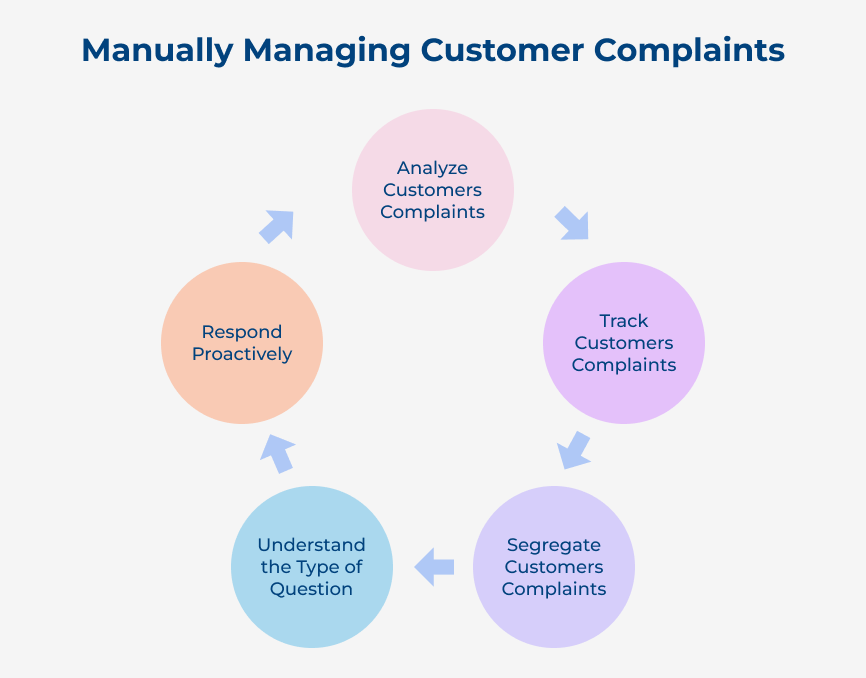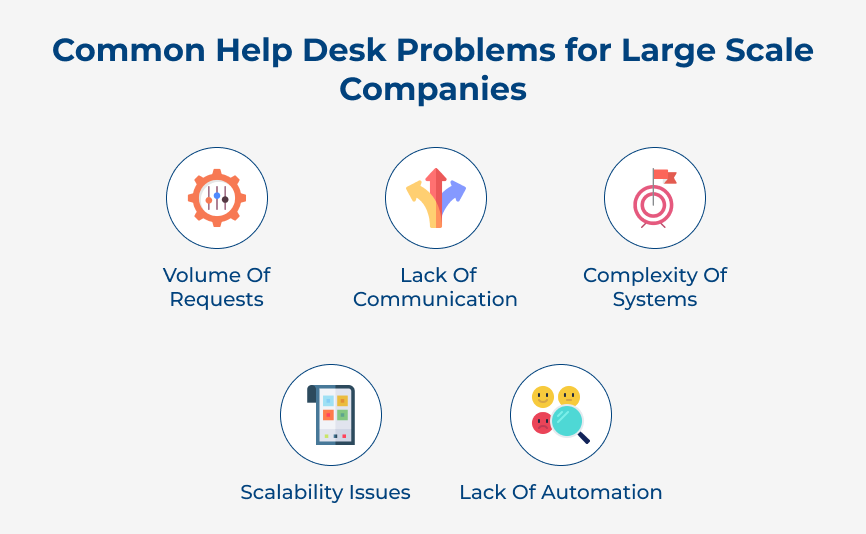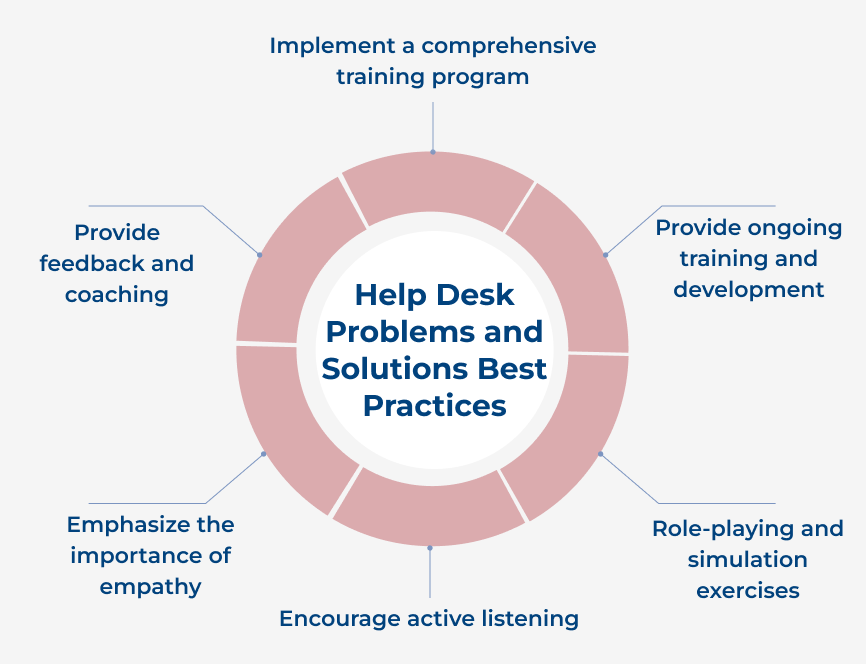The poor customer service both frustrates customers and tarnishes the company’s reputation. Let’s consider that, a customer’s software complaint is manually handled by the help desk team. It might get lost or not prioritized, leading to customer dissatisfaction with a feeling of being ignored.
How to resolve:
- Implement a proper ticketing system to track and prioritize customer complaints.
- Use automation tools to streamline the complaint management process and ensure all complaints are addressed promptly.
- Train staff on how to effectively use customer service software and handle complaints professionally to improve customer satisfaction.
3. Taking Excess Time to Respond
Ever thought about why the business is taking too long to respond to IT help desk requests? If so, it’s a common issue. It can hurt customer service and overall customer experience. The average response time is 12 hours. Extended response times from IT help desk staff can cause customer frustration due to a lack of updates on their issues.
Decreased trust in the company and a poor customer experience can be the outcomes. One example of a mistake is when a customer’s computer stopped working in the middle of an important project. They submitted a ticket to the help desk but didn’t receive a response for several hours. It can cause them to miss their deadline.
Solution:
- Set up automated notifications to alert customers when their request has been received and is being worked on.
- Implement a ticketing system to prioritize and track incoming requests to ensure timely responses.
- Train staff on effective communication and time management techniques to improve customer satisfaction.
4. Blaming Customers
Blaming customers can have a significant negative impact on customer service and customer experience. Customers may feel misunderstood, leading to a breakdown in trust between them and the help desk. It can result in lower customer satisfaction, increased customer complaints and lost business for the company.
A common use case of the mistake is when a customer calls the help desk with an issue on their device, only to be met with a response blaming them for the problem. It can lead to poor interaction and leave the customer feeling undervalued.
Solution:
- Take ownership of the issue and guide how to resolve it.
- Ask questions to better understand the problem and provide tailored solutions.
- Offer clear and concise instructions on troubleshooting steps or escalate the issue to a higher level of support if necessary.
5. Lack of Information
One common issue faced by IT help desks is a lack of information provided by customers. It can lead to delays in resolving technical issues and negatively impact customer service. Inadequate information from customers may require help desk agents to spend extra time gathering details. It can result in longer wait times for customers and frustration on both sides.
An example of the mistake is when a customer simply states that their computer is not working without providing any specific details. The help desk agent must then spend time asking probing questions to determine the root cause of the issue.
Solution:
- Encourage customers to provide detailed information when submitting a support ticket or calling for help.
- Offer online self-service portals where customers can provide information about their issue before contacting the help desk.
- Provide training to help desk agents on how to ask the right questions to quickly gather the necessary information from customers.
6. Sounding Scripted or Robotic
Sounding scripted or robotic is a common problem that IT help desk professionals face when interacting with customers. The mistake occurs when employees rely too heavily on pre-written scripts or follow a rigid protocol. It results in artificial and impersonal interactions. The issue can negatively impact customer service, as customers may feel like they are not being listened to.
The mistake can also make customers feel like they are just another ticket number, rather than a valued individual. Let’s assume a customer calls in with a unique issue. It doesn’t fit the standard troubleshooting steps provided in the script. Continuing rigidly with the script instead of adjusting to the customer’s needs can cause frustration.
Solution:
- Focus on active listening and engage in a two-way conversation with customers to better understand their needs.
- Provide personalized solutions and recommendations based on the customer’s specific situation, rather than sticking strictly to a script.
- Offer additional training to help employees improve their communication skills. It helps in developing a more empathetic approach when assisting customers.
7. Switching Between Channels Without Context
Switching Between Channels Without Context is a common mistake that IT help desk agents make when assisting customers. When a customer contacts through one channel and the agent responds through a different one without acknowledging the previous conversation.
When a mistake happens, it affects customer service and experience negatively. Customers may have to explain their issues repeatedly. It leads to a longer resolution time and decreased satisfaction. The IT help desk’s disorganization and lack of attention can harm the company’s reputation.
Solution:
- Use a centralized system to track all customer interactions, ensuring continuity across channels.
- Always reference previous conversations when responding to customers through different channels.
- Provide training to agents on the importance of maintaining context and consistency in communication with customers.
8. Being Unempathetic
Empathy is a common issue for help desk technicians, impacting customer service quality. IT professionals make a mistake by not empathizing with customers’ emotions during technical issues. Empathy is the most important factor in building customer loyalty.
When a help desk technician lacks empathy, it can lead to customers feeling unheard and frustrated. Let’s assume, a dismissive attitude from the IT technician can make customers feel disrespected when seeking help. It can lead to increased frustration and a communication breakdown.
Solution:
- Practice active listening and show genuine concern for the customer’s issue.
- Acknowledge the customer’s feelings and validate their experience.
Offer solutions in a friendly manner.
9. Closing a Ticket Without Confirmation
Closing a ticket without confirmation is a common mistake that can occur in IT help desk environments. The mistake occurs when a support agent marks a ticket resolved before confirming with the customer that their issue is fully resolved.
The mistake can hurt customer service and customer experience. The customer may feel that their problem was not properly resolved if the ticket is closed without confirmation. It can lead to frustration, dissatisfaction and a lack of trust in the IT support team.
Solution:
- Always confirm with the customer that their issue has been resolved before closing the ticket.
- Provide detailed instructions or follow-up steps for the customer to ensure they can verify the resolution themselves.
- Implement a system or process that requires customer confirmation before closing a ticket, such as an automated email survey or feedback form.
10. Making Decisions Without Data
IT help desk professionals often have to make decisions despite lacking all the necessary data. The mistake can lead to inefficiencies, delays in issue resolution and customer dissatisfaction.
Limited data access can hinder IT help desk agents, leading to delays and customer dissatisfaction. Insufficient data-driven decisions can exacerbate issues and result in incorrect solutions, impacting customer experience.
Solution:
- Implement a comprehensive ticketing system that captures all relevant customer information and previous interactions for easy reference.
- Provide regular training to help desk agents on how to effectively gather and analyze data to make informed decisions.
- Utilize data analytics tools to analyze customer trends and common technical issues, enabling proactive problem-solving.
Why Most Large-Scale Companies Are Suffering with Most Common Help Desk Problems?
Let us now go through the core causes behind these struggles and learn about strategies to mitigate them effectively.






